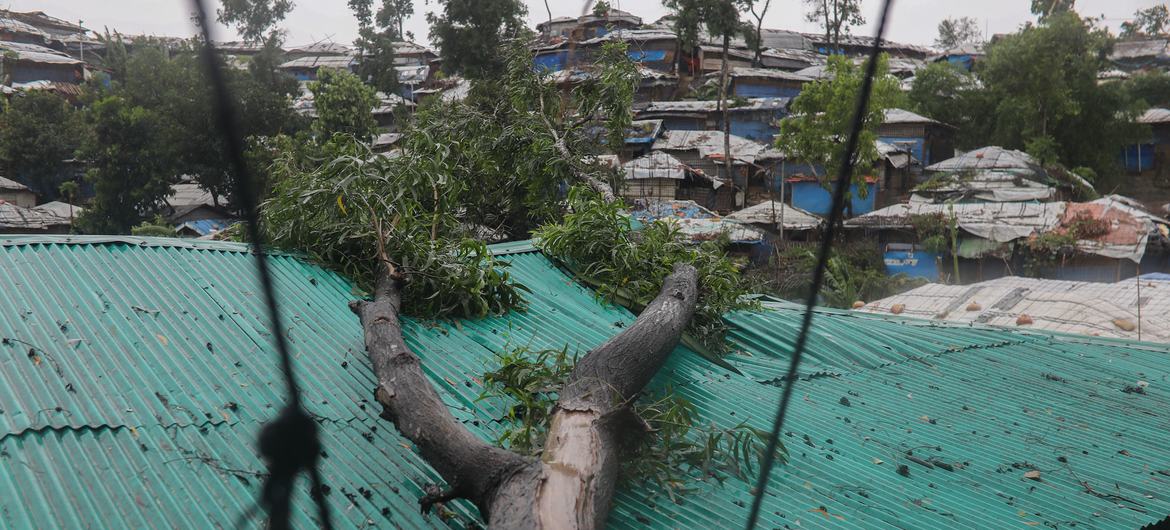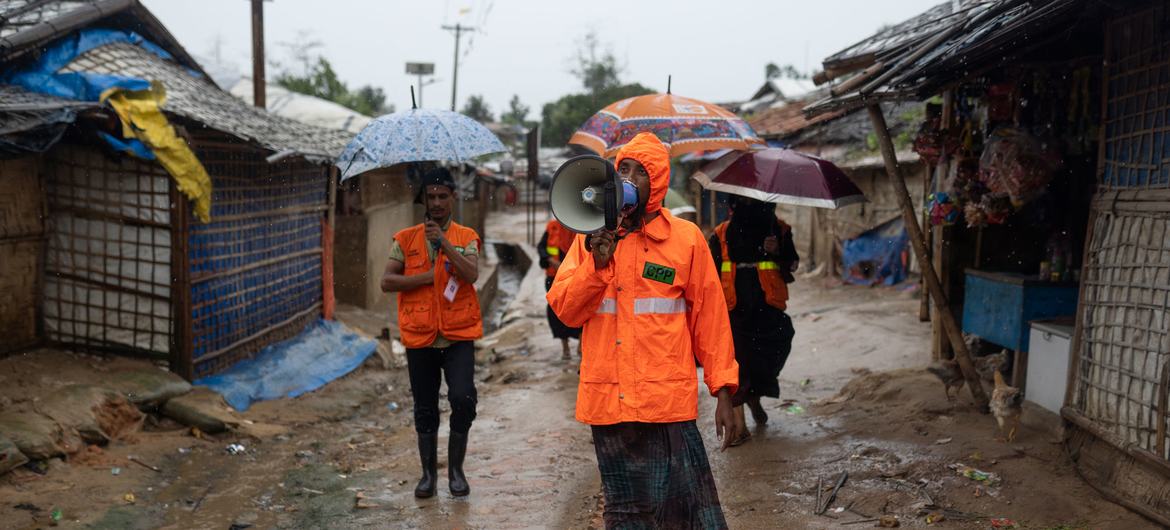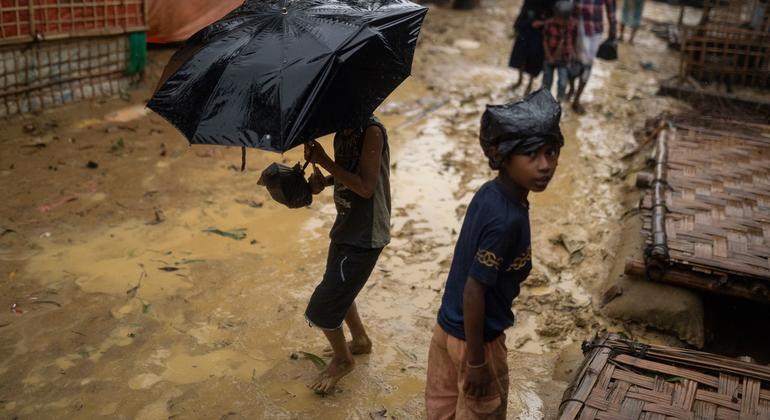OCHA said that communities there had spent the day cleaning up, and counting the cost of the storm, categorized as Extremely Severe, when it smashed into Myanmar’s western states and regions on Sunday, with guests as strong as 250km per hour – continuing to lash some areas the day after, with heavy rain.
Authorities and humanitarian aid agencies had launched a massive evacuation plan before the storm crashed ashore north of Sittwe.
Six million already in need
Humanitarian needs in Rakhine state and northwest Myanmar were already dire before the cyclone hit, with approximately six million people already in need of relief aid, according to OCHA, as a result of years of conflict and displacement.
Today, hundreds of thousands of Rohingya are living in temporary shelters where their movements are restricted by the military regime, which declared the whole of Rakhine a disaster area in the wake of Mocha.
First reports indicated that the worst of the cyclone spared the major Rohingya refugee camp complex of Cox’s Bazar in Bangladesh, which is home to nearly one million mostly Rohingya refugees, the majority of whom fled persecution and violence in Rakhine, beginning in the summer of 2017.
Much of Sittwe destroyed
But news reports indicated that although not as dire as predicted, there were still several killed in Myanmar, and hundreds of thousands of Rohingya left homeless.
OCHA said there was widespread destruction across Sittwe, with few houses left standing. Many of the flimsy bamboo longhouses in displacement camps were wrecked.
“Communications with teams on the ground are still limited but early reports suggest the damage is significant, particularly in Rakhine, and that needs across all communities will be high”, said the OCHA situation report on Monday.
“Extremely strong winds brought down power lines, uprooted trees, and damaged and destroyed houses. Storm surge knocked out bridges and inundated homes.”
Health, relief items, shelter, and water, sanitation, and hygiene needs are already being reported, with the added deadly threat of landmines in the conflict-affected rural areas, having shifted during flooding.

Cyclone Mocha brought heavy rain and winds while crossing a Rohingya refugee camp in Teknaf, Cox’s Bazar, Bangladesh on May 14, 2023.
Cell towers damaged
Communications with partners on the ground was partially restored during the day but still remains limited after extensive damage to telecommunications towers, OCHA continued.
Water and power services have been badly interrupted all day with generators now the primary source of electricity for most people due to downed lines.
Humanitarian partners are working to start rapid needs assessments in the field on Tuesday, to confirm the magnitude of impact from the cyclone and the immediate assistance that is required.
Early reports have also started coming in of widespread flooding and needs in the northwest – an area that is also heavily conflict-affected.

A Rohingya refugee camp in Cox’s Bazar prepares for Cyclone Mocha.
Funding desperately needed
OCHA said an urgent injection of funds to assist recovery was “desperately needed to facilitate a full-scale response to the impact of the cyclone and subsequent flooding.” To date, the $764M Humanitarian Response Plan (HRP) is only 10 per cent funded.
Some IDPs are still staying in cyclone shelters near displacement camps, with some reports of injuries and needs for medical treatment. Those staying in temporary shelters, such as schools, require assistance.
Movement is challenging and debris clearance is ongoing. Heavy traffic was reported during the day due to large numbers of people returning to their Sittwe homes from inland areas, combined with debris on the roads.
Rohingya shelters damaged
News reports suggest that around 3,000 Rohingya shelters were damaged during the passage of Mocha, with some completely destroyed. The country’s refugee commissioner’s reported damage to 32 learning centres, and 29 mosques.
In the refugee camps where there were 120 landslides reported, at least 5,300 refugees were reportedly relocated to more secure locations, while the Bangladeshi Government said around 250,000 were in need of food and shelter across the region overall by Sunday night.
Authorities in Bangladesh had evacuated some 750,000 people ahead of the storm.



